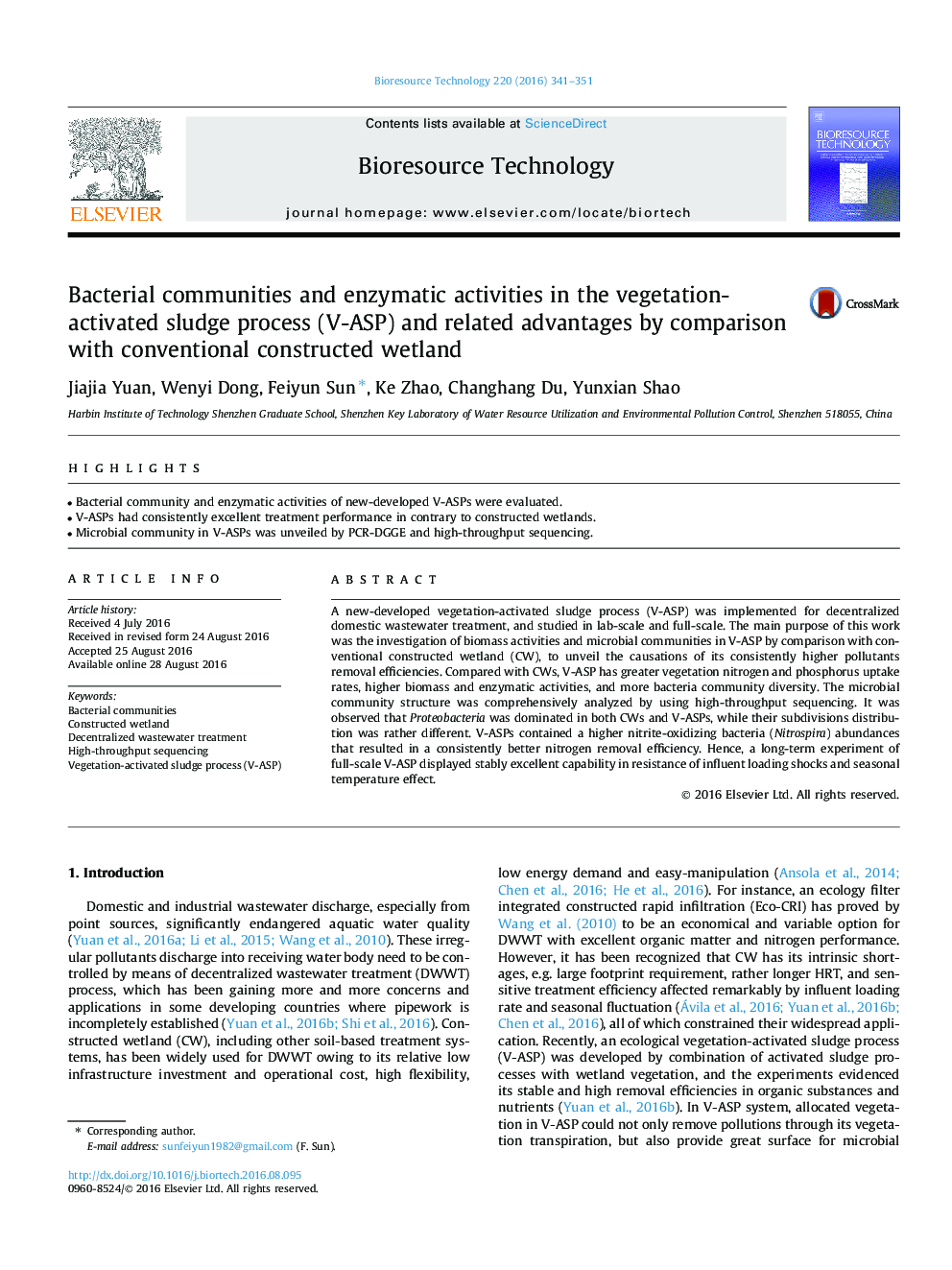| Article ID | Journal | Published Year | Pages | File Type |
|---|---|---|---|---|
| 7069590 | Bioresource Technology | 2016 | 11 Pages |
Abstract
A new-developed vegetation-activated sludge process (V-ASP) was implemented for decentralized domestic wastewater treatment, and studied in lab-scale and full-scale. The main purpose of this work was the investigation of biomass activities and microbial communities in V-ASP by comparison with conventional constructed wetland (CW), to unveil the causations of its consistently higher pollutants removal efficiencies. Compared with CWs, V-ASP has greater vegetation nitrogen and phosphorus uptake rates, higher biomass and enzymatic activities, and more bacteria community diversity. The microbial community structure was comprehensively analyzed by using high-throughput sequencing. It was observed that Proteobacteria was dominated in both CWs and V-ASPs, while their subdivisions distribution was rather different. V-ASPs contained a higher nitrite-oxidizing bacteria (Nitrospira) abundances that resulted in a consistently better nitrogen removal efficiency. Hence, a long-term experiment of full-scale V-ASP displayed stably excellent capability in resistance of influent loading shocks and seasonal temperature effect.
Keywords
Related Topics
Physical Sciences and Engineering
Chemical Engineering
Process Chemistry and Technology
Authors
Jiajia Yuan, Wenyi Dong, Feiyun Sun, Ke Zhao, Changhang Du, Yunxian Shao,
